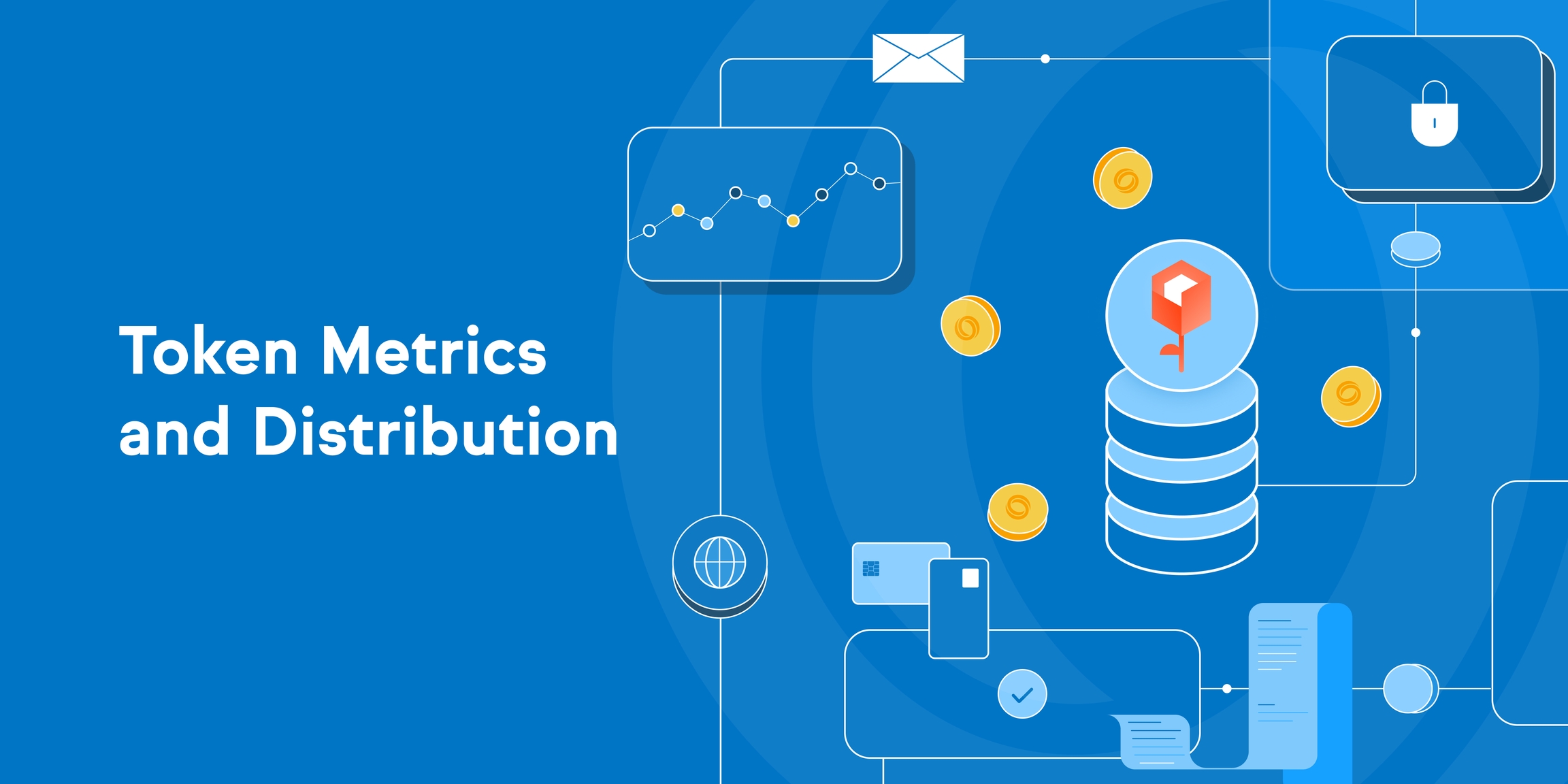Token Metrics and Distribution

Quick Token Facts
Supply: The SMART native token is a capped supply token. The circulating supply at launch will be approximately 1.5 billion tokens, and the total cap is fixed at 10 billion tokens.
Token utility: The SMART token will be used for transaction fees, staking, and delegation at the consensus layer.
Staking rewards: ~2.3 billion tokens will be automatically paid out as staking rewards to stakers and delegators for securing the network over time.
Token Distribution
The quantity of SMART tokens reserved for various network functions, as a percentage of the total existing token supply, approximately follows the distribution below.
Token Distribution Glossary
Backers: Tokens sold directly to backers prior to mainnet launch. The vast majority of these sales took place in 2024.
Core Contributors: Compensation to core contributors for contributing to the development of the Smart AI Network.
Foundation Endowment: Endowment to the Smart AI Foundation to foster the development and maintenance of the Smart AI Network.
Community and Ecosystem: Funding programs and services that engage the Smart AI Network community, including developer grants and other community incentives by the Smart AI Foundation.
Strategic Partners and Reserve: Funding programs and services provided by key strategic partners in the Smart AI Network.
Staking Rewards: Rewards to be paid out on-chain to stakers and delegators for contributing to the security of the Smart AI Network.
Circulating Supply
Not all tokens have been released publicly or will be released publicly by Mainnet launch. Due to release schedules and locks, only a fraction of the total existing token supply will be in circulation at the time of Mainnet. Approximately 1.5 billion tokens out of a fixed supply of 10 billion tokens in total will be in circulation immediately upon Mainnet. In addition, a portion of Foundation tokens that are not in the circulation supply at launch are staked on the network. Any staking rewards earned will go back into the network via future validator delegations, network feature development, and ecosystem grants.
Tokens set aside for Staking Rewards will be disbursed in accordance with on-chain reward mechanisms which calculate rewards based on how many blocks are proposed by validator, how many blocks are signed by a validator, how many nodes are participating in staking, and how many tokens are staked etc. The remaining allocations will be disbursed according to the following release schedule:
Staking Incentives
Given the Smart AI Network’s founding vision to become a world-class, public, permissionless blockchain platform, the contributing team at Smart AI has been focused on ensuring that setting up a node is as seamless as possible for all community members. To that end, we’ve put a lot of thought into making sure our staking conditions minimize barriers to entry and encourage meaningful engagement on the network. Some key parameters include:
Number of validators to participate in the consensus committee (and receive staking rewards): 120. Validators will be based on the stake weight on the network.
Minimum stake: 100 tokens per entity
Selection to the consensus committee: Each entity can have at most one node elected to the consensus committee at a time.
Staking rewards: The network is targeted to reward stakers with rewards of between 2.0% to 20.0% depending on the length of time staked to provide staking services on the network. In order to be eligible for staking rewards per epoch, a node would need to sign at least 75% of blocks in that epoch.
Slashing: At the time of Mainnet launch, the network will only slash for forms of double-signing. The network would slash the minimum stake amount (100 tokens) and freeze the node. Freezing the node is a precaution in order to prevent the node from being over-penalized. The Network will not slash for liveness or uptime at launch.
Unbonding period: The network will have a ~14 day unbonding period. During this time, staked tokens are at risk of getting slashed for double-signing and do not accrue rewards during this time.
Consensus voting power: The current voting power mechanism is stake-weighted. This means that the consensus voting power of a validator is proportional to its stake. In this model, the network will require signatures by validators representing +2/3 of the total stake of the committee to sign a block. Note that in Tendermint, a validator's opportunities to propose a block in the round-robin block proposer order are also proportional to its voting power.
Last updated